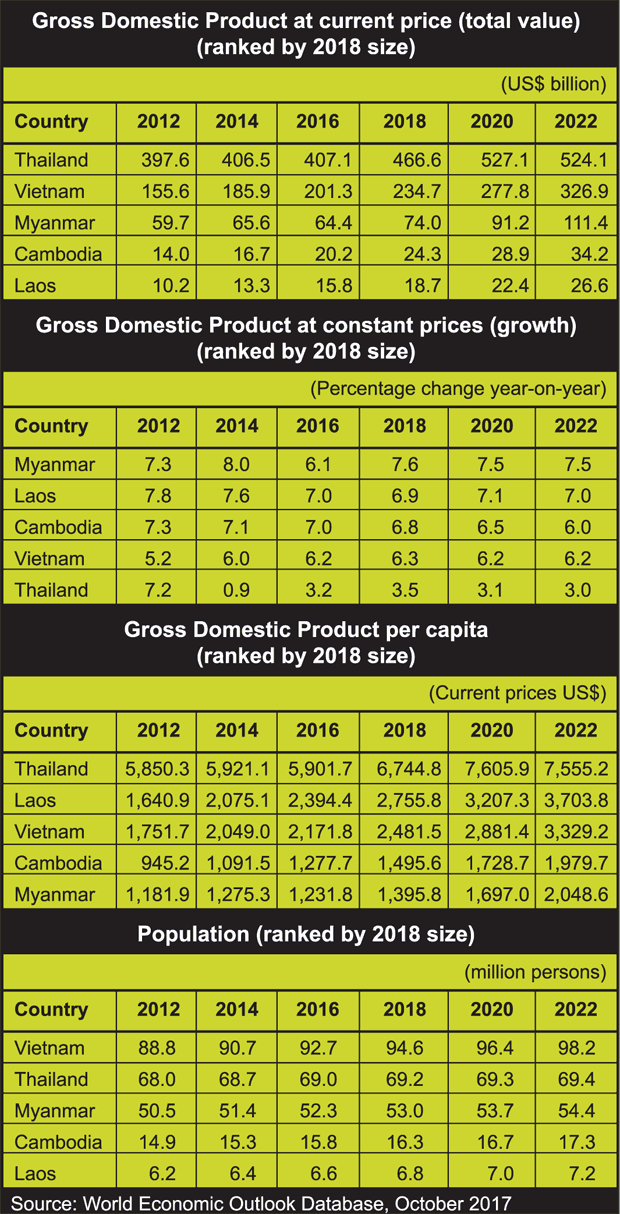Thailand: the Human Resource Hub of CLMTV?
With the rapid expansion of political, economic and social relationships between the countries of what is now becoming known as CLMTV (Cambodia, Laos, Myanmar, Thailand, Vietnam), this sub-region of ASEAN is beginning to become recognised as the mainstay of Thailand’s international relations.
Historically, this region was once identified as Indochina – the lands between India and China. Subsequently the United Nations and Asian Development Bank identified the Mekong River as the unifying factor among the smaller countries wedged between India and China, creating the title of Greater Mekong Sub-Region, with its own coordinating body, which became known as the Mekong River Commission.
The term CLMV was coined to represent the coordination of these countries, to which Thailand has contrived entry as CLMTV. It remains to be seen whether Thailand will take its place alphabetically as CLMTV, or gain the last word as CLMVT. Thailand’s Ministry of Commerce appears to prefer the latter option.
For the time being, Thailand remains the largest economy in the group, although not the largest country by population or area. The former distinction lies with Vietnam, and the latter with Myanmar. The longer term outlook is hard to predict, given the potential of both Vietnam and Myanmar. But for the foreseeable future, money matters most, and Thailand currently has more of that.
Population trends
With 69.2 million people, Thailand is second in CLMTV to Vietnam, which has 94.6 million. Myanmar was previously believed to be close to catching up with Thailand, but its recent census, the first in many years, suggests that there may be only 53 million people in Myanmar, potentially now less, since the Myanmar military is assiduously expelling upwards of a million Rohingya minority people. The remaining two countries: Cambodia, with 16.3 million and Laos with 6.8 million, are relatively small players, although growing fast.
It is now well recognised that Thailand is a maturing and ageing society, with higher proportions of elderly and fewer young people, resulting in potential shortages in workforce. Contrariwise, the other countries of CLMTV display less mature population patterns, with still growing populations, fewer though increasing elderly people, but large youthful age groups for whom work opportunities must be found.
The possibilities that population profiles and workforce needs might be harmonised with outflows from CLMV to Thailand present challenges. There are already some three million CLMV workers in Thailand, mostly from Myanmar. Thailand seeks to reduce rather than to increase these numbers, while also discouraging migration from other neighbouring countries. The ultimate policy response may lie at an ASEAN rather than CLMTV level. If an open migration policy is ultimately adopted, with migration determined by supply and demand, then there would certainly be continuing inflows from CLMV to Thailand. But this is unlikely to arise, at least until such time as the respective countries reach an equal level of development.
Gross Domestic Product per capita
With a GDP approaching US$467 billion, Thailand remains far ahead of the second CLMTV player Vietnam, which approaches US$235 billion, half that level. Myanmar, with only US$70 billion, Cambodia, with US$24 billion, and Laos, with approaching US$19 billion, are even further behind.
However the GDP growth rates of these lower level countries, running consistently at 6% to 7% per annum over extended periods, are enabling these economies to catch up fast.
Over the coming five years, GDP per capita in each CLMTV country will grow, but not spectacularly. Thailand has lower economic growth, but also has the lowest population growth. Contrariwise, the CLMV countries have much higher GDP growth rates, but also have higher population growth, thereby offsetting their more rapid economic growth. While Thailand is forecast in five years to have achieved overall per capita growth of 50%, over the previous decade the CLMV countries will have doubled their per capita GDP over the same period.
Consequences of growth for Thailand’s human resources
CLMTV represents massive opportunities for which Thailand represents the optimal geographic centre. Industrial relocation can provide a partial solution for labour shortages in the domestic Thailand market by moving investment outwards rather than labour inwards.
The CLMTV market will also represent an important opportunity for highly-skilled Thailand managers and technicians, who can work in adjoining countries, at least on a shorter-term basis, while training CLMV in-country workforces.
The ability of Thailand to take fullest advantage of these opportunities will depend on the quality of Thailand’s strategic planning as well as its own labour force education and skills. We will review aspects of quality as compared with quantity in a subsequent article.



 Thailand
Thailand




